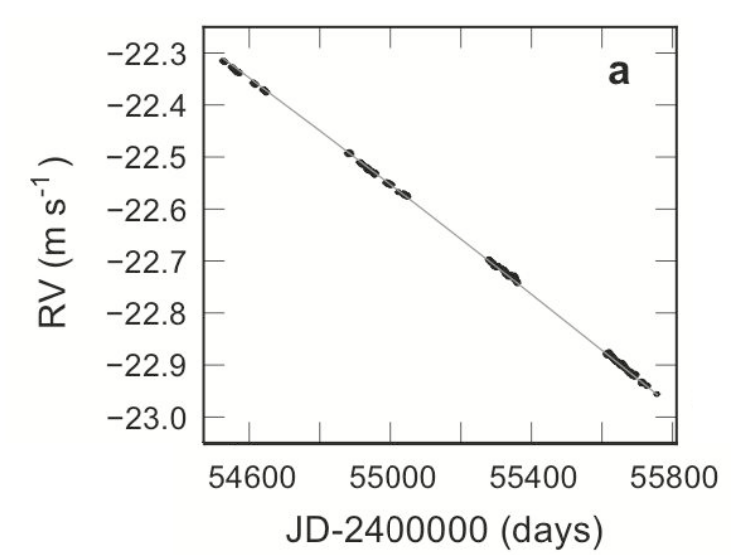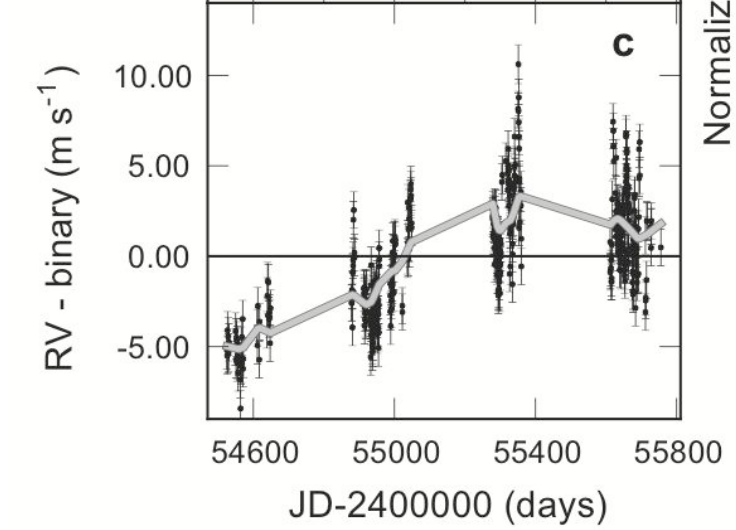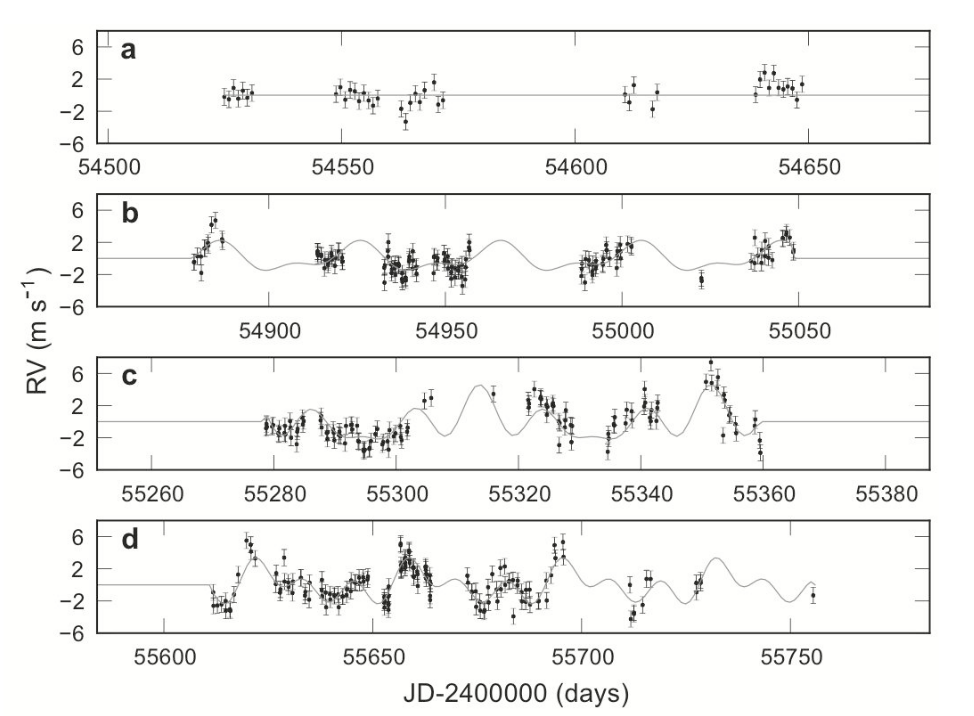
 Copyright © Michael Richmond.
This work is licensed under a Creative Commons License.
Copyright © Michael Richmond.
This work is licensed under a Creative Commons License.
A few days ago, scientists at the ESO announced the discovery of a planet in the alpha Centauri star system. The planet is claimed to be roughly the mass of the Earth, but very, very close to its host star: so close that the planet will be roasted to a temperature of over 1000 degrees. Let's look at this claim in detail.
The astronomers measured the spectrum of the star alpha Cen B very, very carefully over four years. They were able to measure the radial velocity of the star from the Doppler shifts in its spectral lines.

You can see a gradual change in the velocity of the star, due to its orbital motion around the other star alpha Cen A.
So, the astronomers made a model of that motion, and removed the changes in velocity due to that motion from the measurements. The results looked like this:

The astronomers realized that some of these small variations were due to the effects of the magnetic field of the star. So, they removed them. What was left was this:

The astronomers decided that some of these remaining variations were due to the rotation of the star (alpha Cen B), and due to the effects of its magnetic field. They made a model of those effects -- shown by the thin solid lines in the figure above -- and subtracted that model from the data.
What was left after all those subtractions was a very, very small variation in radial velocity. The scientists saw evidence for a periodic variation in these residuals with a period of about 3.2 days. They folded the data with that period and (finally) saw this pattern:

The green dots are the individual measurements. The red dots are averages of the measurements in bins of phase.
Note the size of the periodic variation in velocity due to the putative planet: only about +/- 0.5 meters per second!
 Copyright © Michael Richmond.
This work is licensed under a Creative Commons License.
Copyright © Michael Richmond.
This work is licensed under a Creative Commons License.